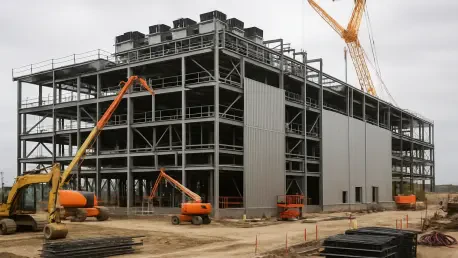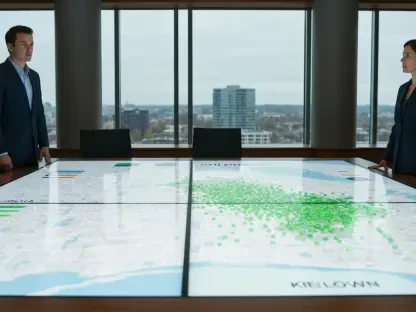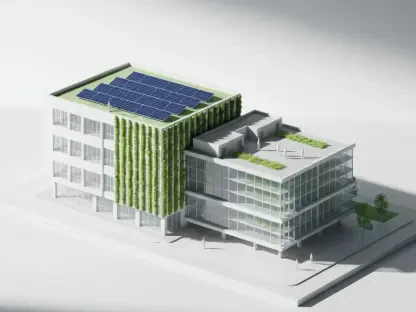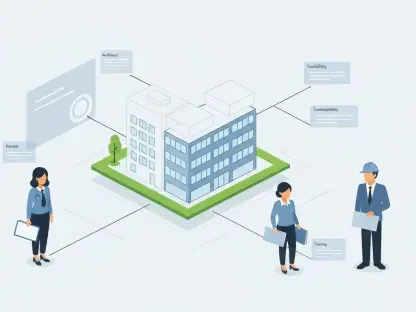We’re thrilled to sit down with Luca Calaraili, a seasoned expert in construction, design, and architecture with a deep passion for leveraging technology to revolutionize the industry. With years of experience under his belt, Luca offers a unique perspective on the evolving landscape of infrastructure development, from policy shifts to cutting-edge projects like data centers and defense initiatives. In this conversation, we dive into the global construction outlook, emerging opportunities in critical infrastructure, and the role of innovation in meeting tomorrow’s challenges. Let’s explore how these trends are shaping the future of the built environment.
How do you see recent global political changes influencing the construction industry’s trajectory over the next few years?
Political shifts, especially with elections in key markets like the U.S., Canada, the U.K., and Australia, have brought a renewed focus on infrastructure. New administrations are prioritizing construction as a driver of economic growth, which is creating a more favorable environment for large-scale projects. What’s exciting is the push to streamline processes—governments are recognizing that delays in approvals can stall progress. This means more projects are moving from planning to execution faster, and for companies in the industry, it signals a robust pipeline of work ahead.
What are some specific policy changes in major markets that are accelerating construction timelines?
In the U.S., for instance, there’s been a notable effort to simplify the permitting process through recent judicial rulings and executive actions. These changes are cutting through red tape that often bogs down projects under environmental reviews. Similarly, in the U.K., there’s a long-term strategy to prioritize efficient delivery of infrastructure, while Canada is centralizing its permitting to slash approval times significantly. These policies aren’t just talk—they’re creating real momentum by reducing barriers and letting us focus on building rather than waiting.
How are funding mechanisms, like federal infrastructure acts, shaping opportunities for growth in the construction sector?
There’s still a huge amount of untapped potential in programs like the U.S. Infrastructure Investment and Jobs Act, with only a fraction of the allocated funds spent so far. This leaves a massive runway for growth as those dollars flow into the market over the coming years. State and local budgets are also holding strong, especially for transportation, and they’re leveraging federal matching funds to maximize impact. It’s a layered approach—federal, state, and local priorities aligning—which creates a steady stream of projects for firms ready to step in.
Why do you think data centers are becoming such a pivotal area for construction growth?
Data centers are exploding because of the digital transformation we’re all living through. With the rise of cloud computing and artificial intelligence, there’s an insatiable demand for infrastructure to support data storage and processing. These aren’t just buildings; they’re highly specialized facilities requiring advanced design and engineering to handle power, cooling, and security needs. For the construction industry, this is a goldmine of opportunity as tech companies race to expand their capacity, and it’s a space where innovation in design can really shine.
How is the surge in artificial intelligence impacting the types of infrastructure projects you’re seeing?
AI is a game-changer. It’s driving demand not just for data centers but also for supporting infrastructure like power grids and renewable energy solutions to sustain these energy-hungry facilities. We’re seeing projects that integrate cutting-edge tech to optimize efficiency, from smart cooling systems to sustainable materials. AI is also influencing how we design and manage projects—using predictive modeling to anticipate challenges before they arise. It’s pushing us to rethink traditional approaches and build for a future where tech is at the core.
What are some of the biggest challenges in meeting the infrastructure demands of rapidly growing industries like AI?
One major hurdle is the sheer pace of growth. The AI sector moves fast, and infrastructure often struggles to keep up—whether it’s securing enough power supply or finding suitable locations for massive data centers. There’s also the challenge of balancing speed with sustainability; clients want projects done yesterday, but we have to ensure they’re built responsibly with long-term resilience in mind. It’s a tightrope walk, requiring close collaboration with tech firms, utilities, and regulators to align on priorities and solutions.
Can you share how defense spending is influencing workload and project focus in the construction field?
Defense spending is a significant driver for us, especially with recent allocations in the hundreds of billions globally. As one of the largest clients for many firms, military projects span a wide range—from aviation facilities to coastal infrastructure. These aren’t just standard builds; they often involve high-security requirements and specialized engineering. The uptick in funding means more contracts are coming down the pipeline, particularly for upgrades and expansions in strategic locations, which keeps our teams busy and pushes us to deliver under unique constraints.
What types of military-related projects are gaining traction right now, and why?
We’re seeing a lot of momentum in aviation and maritime sectors, like projects for the Coast Guard. These areas are critical for national security and often require modernizing aging infrastructure or building new facilities to support advanced equipment. The focus is on resilience—ensuring these structures can withstand extreme conditions while meeting strict operational needs. It’s a fascinating niche because it blends cutting-edge tech with the kind of durability you don’t often see in civilian projects, and the urgency of defense priorities keeps the pace intense.
How do you see financial trends in the industry reflecting the broader opportunities and challenges you’ve described?
Financially, the industry is in a strong position despite some fluctuations. While profits might dip in a quarter due to project cycles or upfront investments, the overall backlog of work is growing, which signals sustained demand. Revenue is steady, and pipelines are expanding, especially in early-stage planning, pointing to years of solid market conditions. Sectors like water take longer to translate into revenue due to their complexity, but large civil projects balance that out with quicker turnarounds. It’s a dynamic mix, reflecting both the megatrends driving investment and the operational challenges of scaling up.
What is your forecast for the future of infrastructure development, especially with these megatrends like sustainability and digitalization on the horizon?
I’m incredibly optimistic. We’re at the cusp of a multi-decade boom fueled by global investments in infrastructure, sustainability, and energy transition. Digitalization, especially tools like AI and building information modeling, will transform how we design and execute projects, making them smarter and more efficient. Sustainability isn’t just a buzzword—it’s becoming a core requirement, pushing us toward resilient, green solutions. My forecast is that firms embracing these trends, while staying agile in the face of policy and tech shifts, will thrive. The future of infrastructure is about building not just for today, but for a world that’s more connected and sustainable tomorrow.









